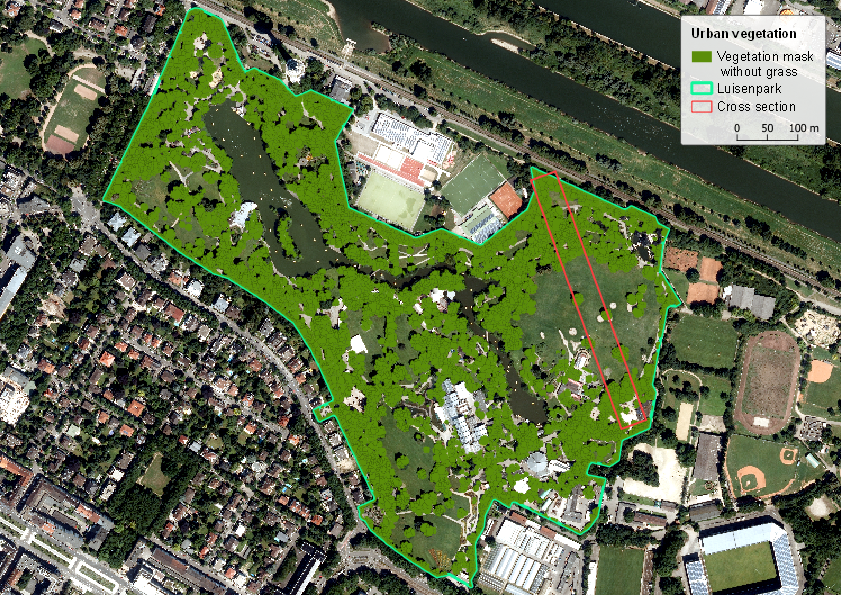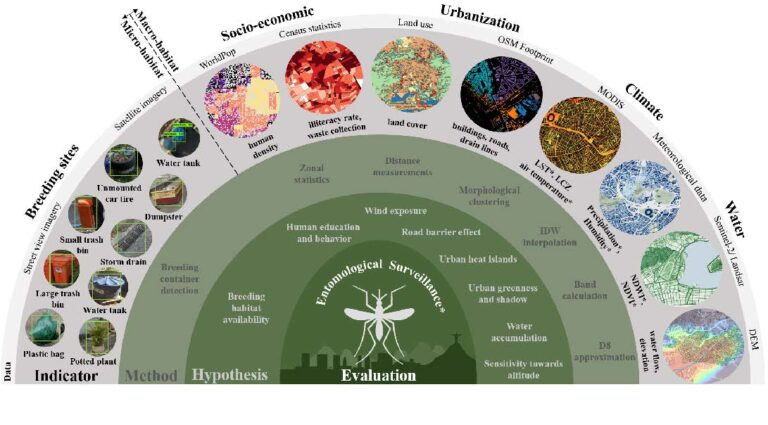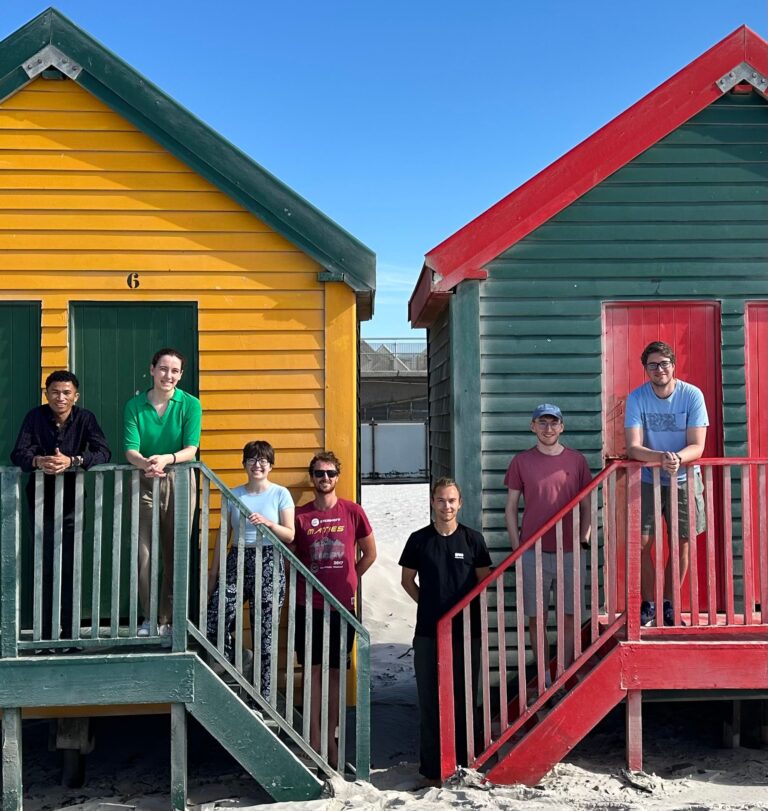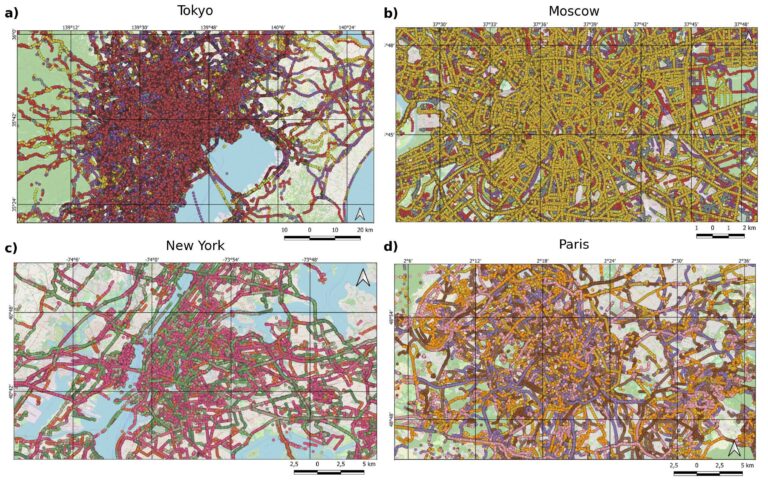Until recently, Nina Krašovec was a research assistant at the GIScience research group. This article is the result of an interview, where she spoke about her work at the time and her motivations. We would like to use this article as an opportunity to express our appreciation of her work at HeiGIT and to wish her all the best for the future.
Hailing from Slovenia, Nina studied Physical Geography and Applied Geoinformatics during her Master’s at the University of Ljubljana following an education in Geography and Italian Language and Literature. Her current focus is on the connection between geography and mental health, topics she never thought to connect until her arrival at Heidelberg University.
Seeing Green
„I think nowadays it is extremely important to know more about the effects on wellbeing and mental health in an urban environment,“ she says. While she always felt a fascination with mental health on a personal level, a project at the Institute of Geography in Heidelberg (GIScience; Prof. Dr. Alex Zipf) allowed her to combine this interest with her geography background by joining a project at PEZ (Psychoepidemiologisches Zentrum, Psychiatric-Epidemiological Center; Central Institute of Mental Health, Mannheim; Prof. Dr. Dr. Heike Tost). Her contribution also arrives at a key time in human demography, when the deluge of new city dwellers means fewer people with access to green spaces. „The urban population is increasing drastically and is projected to reach 68% by 2050,“ Nina explains. „I come from a very green country, where our capital is also very green and find a great value in urban green space.“
She also chose an opportune time to study mental health. Highlighting the variety of opportunities within her topic, she finds an abundance of as-yet-unexploited mental health data with spatial information available. „The great thing about our project is [its] interdisciplinarity. As a geographer, I bring to the table knowledge regarding processing, analysing and understanding spatial data, while my other colleagues bring their knowledge about psychology, neuroscience, etc. This allows us to combine two very different aspects- human psychology and the surrounding environment, which is gaining interest in the recent years.“
Just as studies have found that team diversity contributes to both creativity and conflict, interdisciplinarity can create challenges in Nina’s work as well. „On the one side, combining different research fields can help answer more relevant questions for wider public and can have higher impact, but on the other hand you must still, to some degree, understand other fields- in my case certain aspects in psychology and neuroscience, which had never been part of my studies. It goes the same for my colleagues, who need to know a little bit about spatial data. Only when there is a certain degree of overlap… can [there] be a fruitful collaboration.“
The Grass May Not Be Greener
Nina is involved with PEZ, which „aims at understanding the effects of urban environment on wellbeing and mental health by combining methods from epidemiology, psychology, geoinformatics and neuroimaging. In the geoinformatics part, we are focusing on urban green space.“ Drawing on studies that demonstrate psychological benefits to the presence of green spaces in urban areas, the project team wishes to take a more fine-grained approach. „Our hypothesis is that grass does not have the same effect as trees. But how many trees have a positive effect? Does a more diverse green space have a more positive effect? Are these effects dependent on the season or time of the day?“
To test these hypotheses, Krašovec takes advantage of both technological innovation and spatial data availability. She uses 3D laser scanning data on vegetation structure across the municipality of Mannheim, Germany. Once the structural diversity for the area is estimated, it can be combined with psychological datasets. An interesting factor here is affective valence, a value that is used to measure the (un)pleasantness of a certain event, which can depend on a multitude of correlating factors. One studied outcome will be how the environment can (positively) influence affective valence.


A Tailor-Made Future
Beyond affective valence, her current work may extend to further aspects of greenery in the city. Nina is considering future investigations into the effect of seasonality on the impact of green spaces and would like to integrate tree classification. Diving the data further into evergreen or deciduous trees would allow researchers to factor in the greenness or lack thereof of these spaces over winter.
Once she has plotted the effect of green spaces on psychological outcomes, Nina has her sights set on other geospatial endeavors. Many of her ideas are pegged to the breakneck speed of technology and its widespread voluntary adaptation. „Nowadays, almost everyone owns a smartphone. Technological development is progressing rapidly, and we can already collect data from individuals on-the-fly. Sensors are becoming more accurate, and we can collect more diverse information (e.g., screen time, number of steps, geolocation, accelerometery etc.). These technological advances can help us in researching the risk and resilience factors for mental health in urban environments.“ Her objectives are not solely theoretical, though, with the ultimate hope of developing individually-tailored approaches for the prevention and treatment of mental health disorders.
With urban populations rising and an increasing societal spotlight on mental health, Nina sees no end to the future research for herself and others in the field, including aspiring geographers. „There are many questions to be answered,“ s





